Résumés Année 2009
"In situ reduction of Fe(III) into Fe(II): an example of post-crystallisation transformation"
P. DECHAMBENOIT, S. FERLAY, N. KYRITSAKAS, M. W. HOSSEINI, Chem. Commun., 2009, 6798 - 6800. (download.pdf)
Abstract: Upon exposing crystals made of a combination of an amidinium based dication and [FeIII(CN)6]3- anion to a hydroalcoholic solution of hydrazine and KCl, the reduction of Fe(III) to Fe(II) with concomitant incorporation of K+ cation takes place in the crystalline phase.
 | 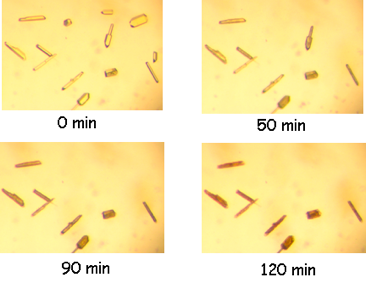 |  |
"Molecular tectonics: design of 2-D networks by simultaneous use of charge-assisted hydrogen and coordination bonds"
C. CARPANESE, S. FERLAY, N. KYRITSAKAS, M. HENRY, M.W. HOSSEINI, Chem. Commun., 2009, 6786 - 6788. (download.pdf)
Abstract: Using a combination of charge-assisted H- and coordination- bonds, a tetra components system composed of a dicationic, a dianionic organic tectons, Ag+ cation and XF6- (X= P, As, Sb) anion behaves as planned and leads to the formation of 2-D isostructural networks for which the energetic contributions of the two recognition events dominate the construction process.
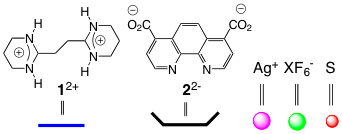 |  |  |
"Design and synthesis of new differentiated mono-tridentate ligands/tectons based on pyridine, terpyridine and oxazoline units"
A. JOUAITI, M. W. HOSSEINI, Helv. Chim. Acta, 2009, 92, 2497-2506. (download.pdf)
Abstract: The synthesis of a series of 10 new linear and bent acentric ligands and/or tectons based on the differentiation of two divergently disposed coordinating poles is reported. The nature of the two poles and their distance are varied by the use of different linear spacers. For these molecules, a monodentate (pyridine) and a tridentate coordinating sites (pyridine bearing at the 2 and 6 positions either two thioether groups or two dimethylamino units of the PySMe and PyN(Me2)2 types respectively, terpyridine, pyridine bearing two optically pure oxazoline units) are combined.
 |  |  |
"Molecular tectonics: generation and structural studies on 1- and 2-D coordination networks based on a metacyclophane in 1,3-alternate conformation bearing four pyrazolyl units and cobalt, zinc and Copper cations"
J. EHRHART, J-M. PLANEIX, N. KYRITSAKAS-GRUBER, M. W. HOSSEINI, Dalton Trans., 2009, 6309-6314. (download.pdf)
Abstract: The combination of a [1111]metacyclophane blocked in 1,3-alternate conformation and bearing four pyrazolyl coordinating units with MX2 (M = Co, Zn and X= Cl or Br) leads to the formation of porous crystals formed by packing of 2-D coordination networks. In the case of CuBr2, the formation of a 1-D network was observed. Structural studies by X-ray diffraction methods on single crystals were performed on all cases reported.
 |  |  |
"Microscopic Topography of Heterocrystal Interfaces"
B. K. OLMSTED, S. FERLAY, P. DECHAMBENOIT, M. W. HOSSEINI, M. D. WARD Cryst. Growth & Design, 2009, 6, 2841-2847). (download.pdf)
Abstract: Real-time in situ atomic force microscopy (AFM) of the (010) and (001) planes of isomorphous [1,4-bis(amidinium)benzene]2M(CN)6.8H2O (M = Fe, Ru) crystals, known to exhibit growth of one of the metallate compounds on the other to produce “core-shroud” heterocrystals, reveals high-fidelity epitaxial growth during heterocrystal formation or roughened surfaces, depending on the crystal face and crystallization conditions. The roughened crystal surfaces that define the interface between heteroepitaxial layers under typical growth conditions are consistent with the interface structure observed by electron dispersive spectrometry, which indicated intermixing of the two materials throughout a 0.7 µm-thick interfacial region, but could not distinguish between various possible mechanisms for the intermixing. The crystal topography and roughness under various conditions reveal that the intermixing zone observed during heterocrystal formation may be a consequence of a rough growth surface on the inner “core” crystal upon evaporation of solvent prior to immersion in the growth medium used for epitaxial crystallization of the second compound. These observations suggest that the roughness of the growth interface can be regulated using specific growth protocols that minimize the intermixing of the two compounds.
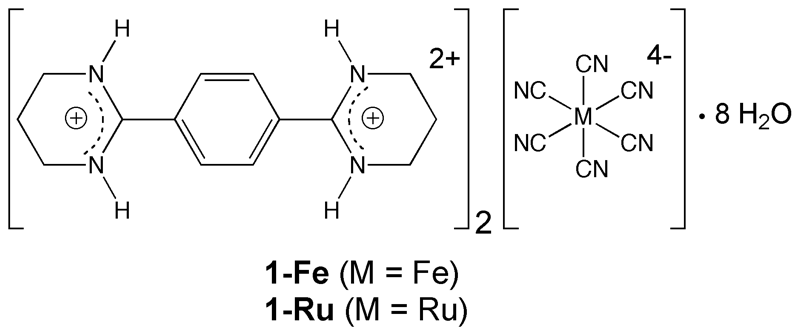 | 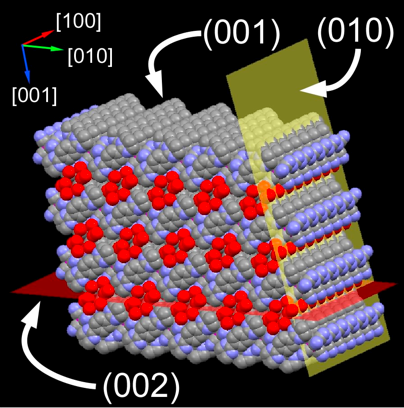 |  |
"Molecular tectonics: 3-D organisation of decanuclear silver nanoclusters"
M. N. KOZLOVA, S. FERLAY, N. KYRITSAKAS, M. W. HOSSEINI, S. E. SOLOVIEVA, I. S. ANTIPIN, A. I. KONOVALOV Chem. Commun., 2009, 2514-2516. (download .pdf)
Abstract: The combination of silver nitrate with a thiacalix[4]arene derivative bearing at the lower rim four benzonitrile groups leads in the crystalline phase to the formation of a 3-D coordination network for which the organic tectons are connected by decanuclear silver nanoclusters.
 |  |  |
"Combination of primary amide and dipyrrin for the elaboration of extended architectures built upon both coordination and hydrogen bonding"
S. A. BAUDRON, D. SALAZAR-MENDOZA, M. W. HOSSEINI CrystEngComm., 2009, 1245-1254. (download .pdf)
Abstract: The 5-(benzamide)dipyrrin, a ditopic tecton bearing two different interactions poles, i.e. a primary amide as H-bond donor and acceptor and a deprotonated dipyrrin unit as a strong chelating group leads in the presence of metal cations (Cu(II), Zn(II)) or metal complexes ([Cu(II)-acac]+ and [Co(III)-salen]+) to homo- and heteroleptic complexes. The latter behave as metallo-organic tectons and generate in the crystalline phase molecular networks. Whereas the homoleptic Cu complex leads to the formation of a 2-D network, its Zn analogue forms a 1-D ribbon type architecture owing to the presence of capping dioxane molecules. For the heteroleptic complexes, in the case of Cu-acac, a 1-D network resulting from bridging of consecutive H-bonded dimers by dioxane molecules is observed whereas for the Co-salen, the salen ligand by offering further hydrogen bonding capabilities, two different solvates with different connectivity patterns have been obtained..
 |  | 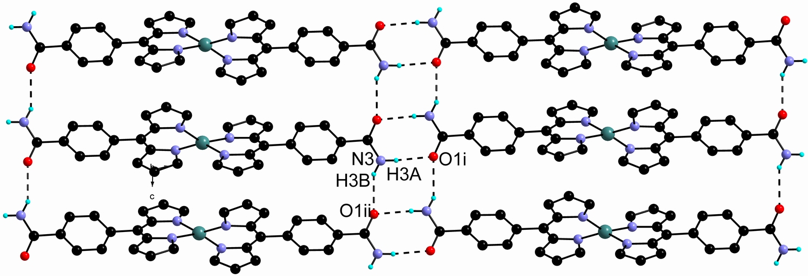 |
"Synthesis and structural studies of metallamacrotricycles based on a metacyclophane in 1,3-alternate conformation bearing four imidazolyl units"
J. EHRHART, J-M. PLANEIX, N. KYRITSAKAS-GRUBER, M. W. HOSSEINI, Dalton Trans., 2009, 2552 - 2557 (download .pdf)
Abstract: The combination of a [1111]metacyclophane blocked in 1,3-alternate conformation and bearing four imidazole units with MX2 (M = Co, Cu, Zn and Hg; X= Cl or Br) complexes leads to the formation of a series of analogous neutral metallamacrotricycles. In all cases, the structure of the binuclear complexes has been studied by X-ray diffraction methods on single crystals.
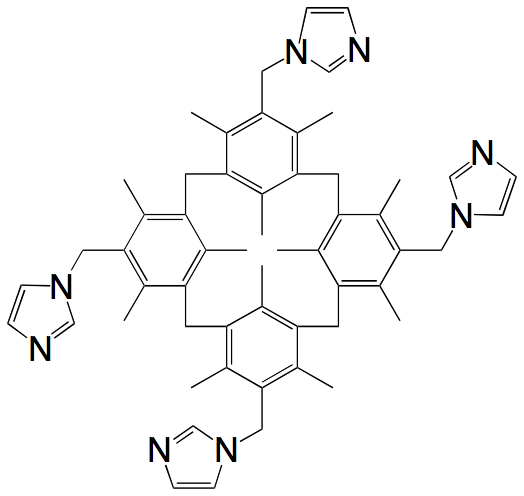 |  |  |
"Playing with isostructurality: from tectons to molecular alloys and composite crystals"
P. DECHAMBENOIT, S. FERLAY, N. KYRITSAKAS, M. W. HOSSEINI, Chem. Commun., 2009, 1559-1561. (download .pdf)
Abstract: The combination of isomorphous and isometric porous crystals based on charge-assisted H bonding leads to molecular alloys and composite crystals.
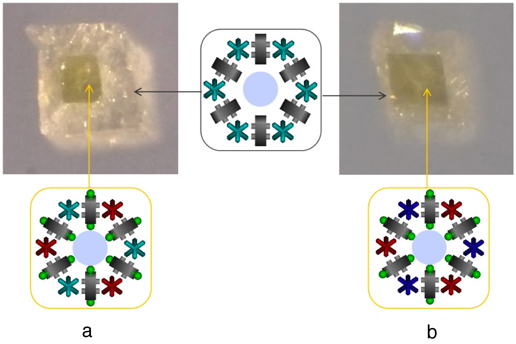 | 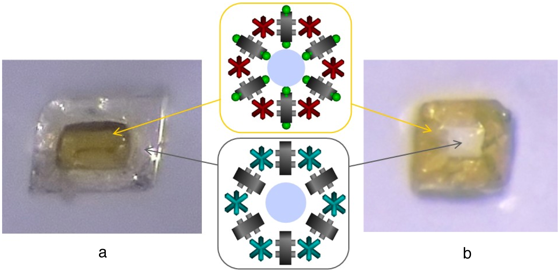 | 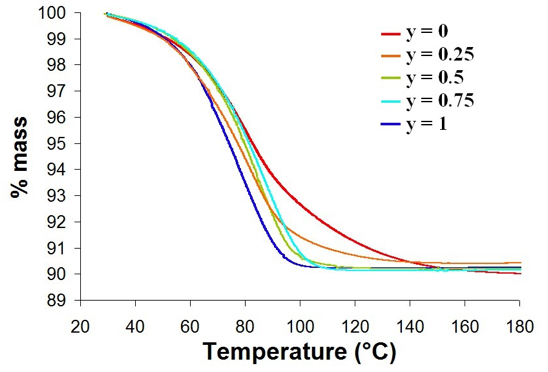 |
"Molecular tectonics at the solid-liquid interface: controlling the nanoscale geometry, directionality and packing of 1-D coordination network on graphite surface"
A. CIESIELSKI, L. PIOT, P. SAMORI, A. JOUAITI, M. W. HOSSEINI, Adv. Mat., 2009, 21, 1131-1136. (download .pdf)
Abstract: The nanoscale control over both the geometry and the directionality of supramolecular arrays composed of 1-D coordination networks can be achieved on surfaces through the design and combination of organic tectons with metal centers or metal complexes. Here we report on an STM study of combinations of a rigid and flat coordinating tecton bearing both a monodentate and a tridentate coordination poles with either Co(II) as its chloride complex or Pd(II) cation in the presence of BF4- counter-anions. These combinations lead to the formation of coordination networks which generate long and shape persistent arrays at the graphite – solution interface. Through a subtle modification of the organic tecton consisting in changing the position of nitrogen atom on the pyridine ring from para (linear tecton) to meta (bent tecton) position, it was possible to modify the geometry of 1-D coordination networks from a linear to zig-zag respectively. Furthermore, whereas the linear tecton leads to a centrosymmetric packing of the directional networks on the surface as also observed in the crystalline phase, for the bent tecton, polar arrangements resulting from the syn-parallel packing of the consecutive zig-zag networks was observed.
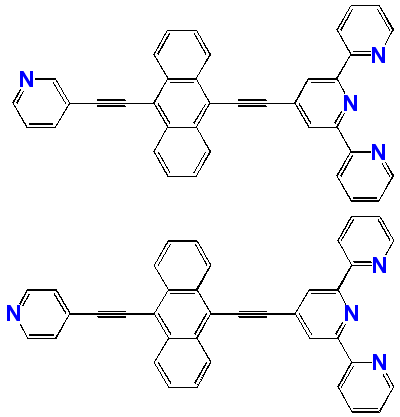 |  |   |
"Molecular tectonics: modulation of size and shape of cuboid 3-D coordination networks"
M.-J. LIN, A. JOUAITI, N. KYRITSAKAS, M. W. HOSSEINI, CrystEngCommun., 2009, 11, 189 -191.(download .pdf)
Abstract: The pore size and shape of cuboid 3-D coordination networks may be modulated by combining rigid neutral organic tectons of different length bearing two pyridines oriented in divergent fashion with zinc dication and SiF6 dianion behaving as metallic node and inorganic tecton respectively.
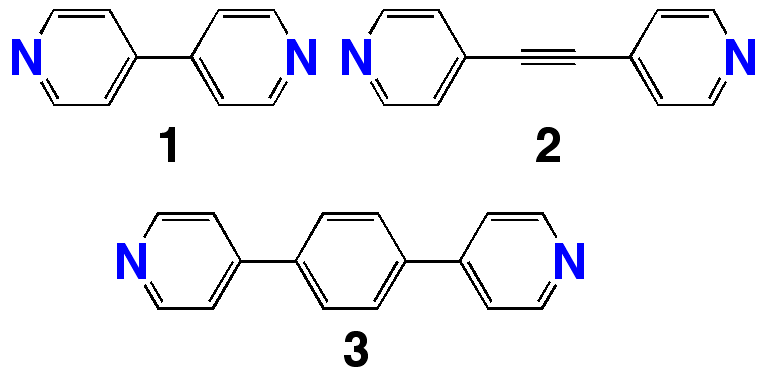 | 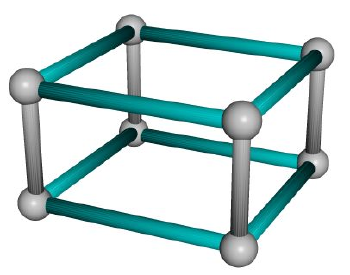 | 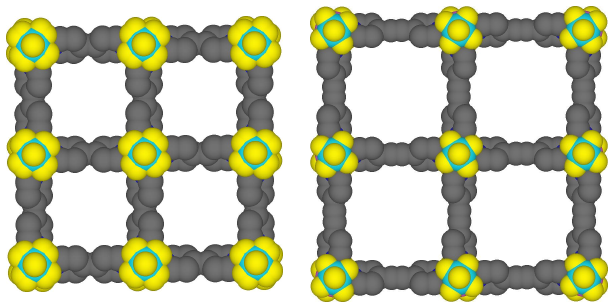 |


